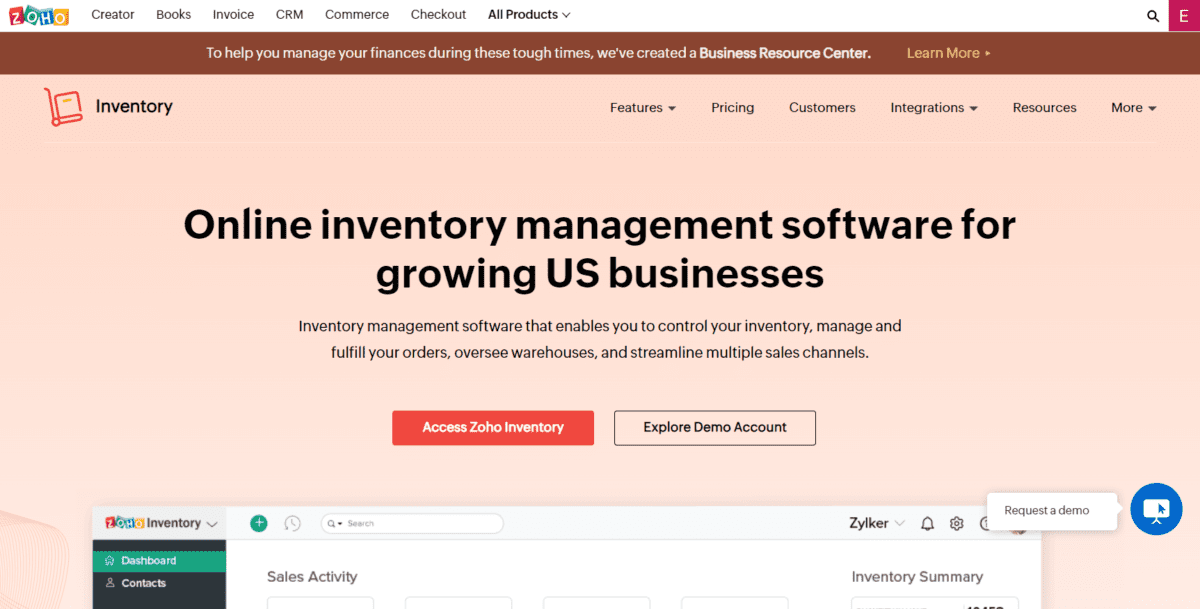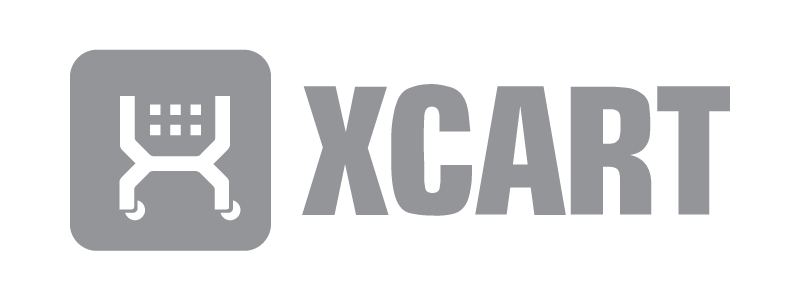If you run an online shop, inventory management software can be a great help. It can track your stock automatically, saving you lots of time and keeping everything accurate. While paid plans usually offer more features, if you’re new to this, you might want to try it out first.
Best Inventory Tracking Software
- Zoho: Best for multi-channel selling.
- Square: Best for soloprenuers.
- Odoo: Best for manufacturing companies.
Picking the right tool for your business matters a lot, especially if you’re trying to be resourceful while fostering growth. Some inventory tools may work better for you because of their special features and functions.

There are free inventory tracking software apps you can try before fully using them. This way, you won’t waste time and money on a system that doesn’t work for you. Switching to a new system later can be a big hassle. So, it’s a good idea to test these free versions first.
Why Inventory Management Is Important
Inventory management is a simple way to keep your manufacturing, warehousing, and customer orders all in sync. It’s key to know how much stuff you have, what it costs you, and when you can get more.
If you don’t have this info, you might run out of things to sell, which could mean lost sales and unhappy customers. Also, without knowing the value of your inventory, it’s hard to price things right.
As your business gets bigger and you have more products and bigger storage space, keeping track of your purchase orders and sales can become too much. That’s where inventory apps can help. They automate the process, saving you from common mistakes, and are well worth the money.
The software’s applications extend to tracking stock levels, orders, and deliveries through all your sales channels. This ensures a smooth workflow and minimizes costly inventory write-offs. By automating processes, teams can focus more on strategic tasks, enhancing overall performance. Upgrade your inventory system now and watch your team’s productivity soar!
What to Look for in Inventory Management Software
Most inventory management software includes similar core functions, like calculating incoming and outgoing stock, but differentiates themselves with additional features or clean user interfaces.
You should start by looking at the unique features of each to see if any would be of value to you. If nothing stands out beyond the regular functionality, see which interfaces are easiest for you to use. You may find some processes make more sense or are more efficient for your business.
So once you have narrowed down which options offer the most useful features on paper, try out the inventory management software to see which you like best. It may be evident if one is more streamlined or convenient for your operation. Other times, it may just come down to preference and ease of learning. Before you get committed, make sure you check the pricing plans so you don’t get sticker shock when you need to upgrade.
ABC Inventory
For more advanced features, like ABC inventory, you’re likely going to need a paid solution. ABC inventory is a method of categorizing inventory into three groups, A, B, and C, based on their importance and value to the business. This system allows companies to prioritize their resources and effectively manage their inventory. This feature is found on Katana.
Inventory Turnover
Understanding product availability is at the heart of any inventory management system. You’ll always want to keep a pulse on your analytics. Inventory turnover is a crucial metric for businesses, reflecting how many times a company can sell and replace its inventory within a specific period. A high turnover rate indicates robust sales, while a low rate may suggest poor sales or overstocking.
Integrations
You want to make sure the software you choose integrates with your ecommerce platform and marketplaces. For example, if you have a WooCommerce store connected to Etsy, Zoho will work for you. Integration with your accounting software will also be crucial.
Security
Ensuring the integrity and safety of your inventory data is paramount. Look for user authentication, role-based access control, and data encryption technology to safeguard your inventory information from unauthorized access. By integrating security with inventory management, businesses can not only optimize their inventory operations but also strengthen their overall security posture.
Best Apps To Track Inventory Items For Free
Here are some amazing inventory software choices that come with free versions. If you’re running a small business and don’t need all the extra features, or if you just want to test out a simpler version before buying the full one, these options can help you manage your inventory better to give you a competitive advantage.
Whether you are a small business that can get away with the features in the lite version or just want to experiment with a basic version before investing in the premium package, check our our list.
Zoho Inventory

Zoho Inventory’s free plan is packed with features that make inventory management simple. You get alerts when stock is running low, options to package items together, links to various online shops, apps for managing customers, and ways to process payments. Plus, it has shipping tools that let you print packing slips and create cut-rate shipping labels from big companies like USPS and UPS, all straight from your dashboard.
Odoo

Odoo is a an open source inventory system that works well with other apps from the same company. Everything in the double-entry inventory system is about moving stock between places (like warehouse management bins). You can use order points and automatic requests to make your supply chain work better.
Square

Square is best known as a point-of-sale (POS) system for small businesses, but it offers much more than that. Besides selling goods in stores, Square allows merchants to accept credit cards online, track inventory levels, and send invoices through email. Its lack of limitations in the free inventory management software is impressive.
Sortly

Sortly is an inventory management system that helps you keep track of your stock in different places. It has special features like working without the internet, making your own barcodes, and scanning QR codes.
Boxstorm

Created by Fishbowl Inventories, Boxstorm delivers a feature-rich inventory management system that lets you track items based on custom characteristics. For example, the expiration date, lot, and serial number allow you to create helpful inventory reports easily.
SalesBinder

SalesBinder has an intuitive interface that allows lots of customization, so you can make the program work exactly how you want. The free version doesn’t include ecommerce integrations, but the premium version has several options.
Stockpile

Stockpile’s inventory app by Canvus is a great pick for small businesses that need simple ways to manage their items. You don’t need to be tech-savvy or download anything because it uses a system that works on the cloud, which is like an online storage space.
RightControl

RightControl (by Losoftware) offers easy-to-use inventory management apps that can help small businesses keep tabs on their products and customer service. Although it lacks standout features, such as barcode scanning and integration with other systems, it offers a decent set of tools for tracking inventory and generating custom reports.
Stock Control

Stock Control is an iOS app that allows you to manage inventory across multiple locations and groups.
If you are looking to optimize your warehouse workforce, you should consider a full-fledged warehouse management system. This will get your employees, inventory, and partners on the same page and can reduce payroll costs by optimizing your processes and workforce.
FAQs
Which Free Inventory Management System Is Right for You?
Having a reliable inventory tracker doesn’t have to be expensive. Poorly managed inventory can negatively affect your bottom line. If you’re ready to gain traction, this is the sure-fire way to do it. Our top three recommendations are:
- Zoho
- Square
- Odoo
Additional options include:
- NetSuite
- Inventory Source (for sourcing your products)
- Inflow Inventory (the free desktop software option has been discontinued)
Ultimately, the specific needs of your company will determine which of these free options is best for you. There is no best choice for every company, since all inventory management tools are different. You can also use a tool like Monday.com, which has a free inventory management template you can use with the project management software.
Luckily, many of these software programs let you try out their features for free or give you a trial period. This means you can check them out before you spend any money. While the free versions might be enough for some small businesses to dominate as they sell more items, they may need to pay for a better plan.
Make sure you have found the right software before that point! Money aside, it can be a huge undertaking to migrate your inventory and sales history to a new system. You can use the free inventory management software to see if the program is a good fit for your online store before investing too much into it.









